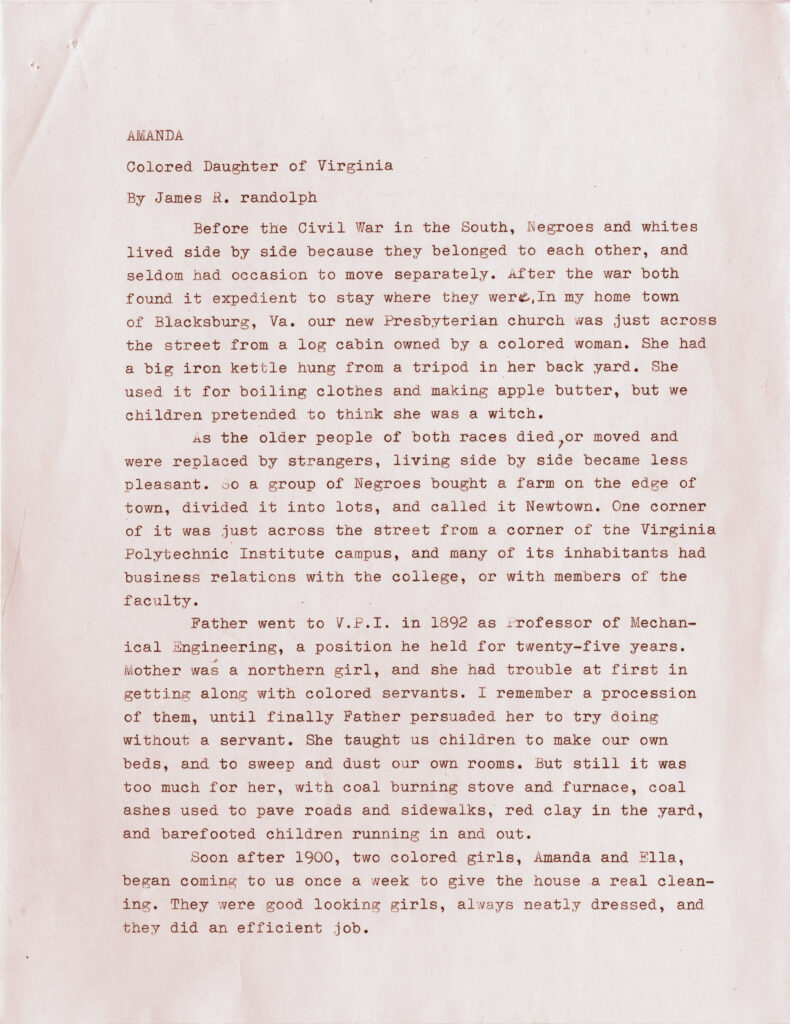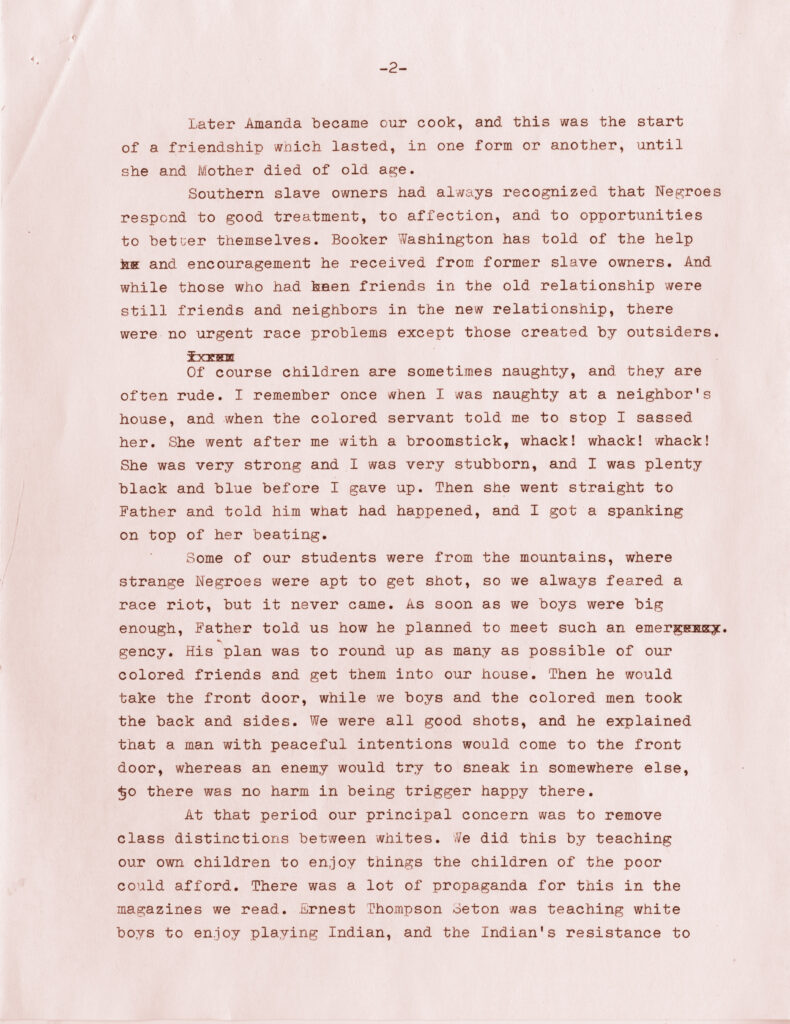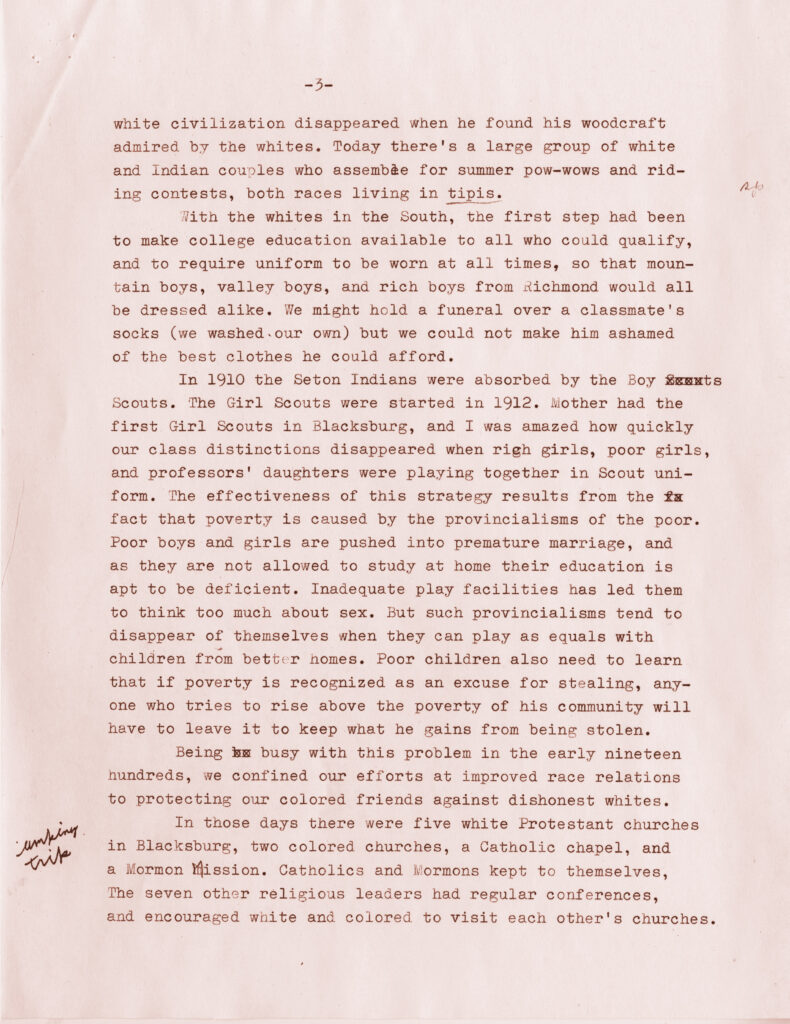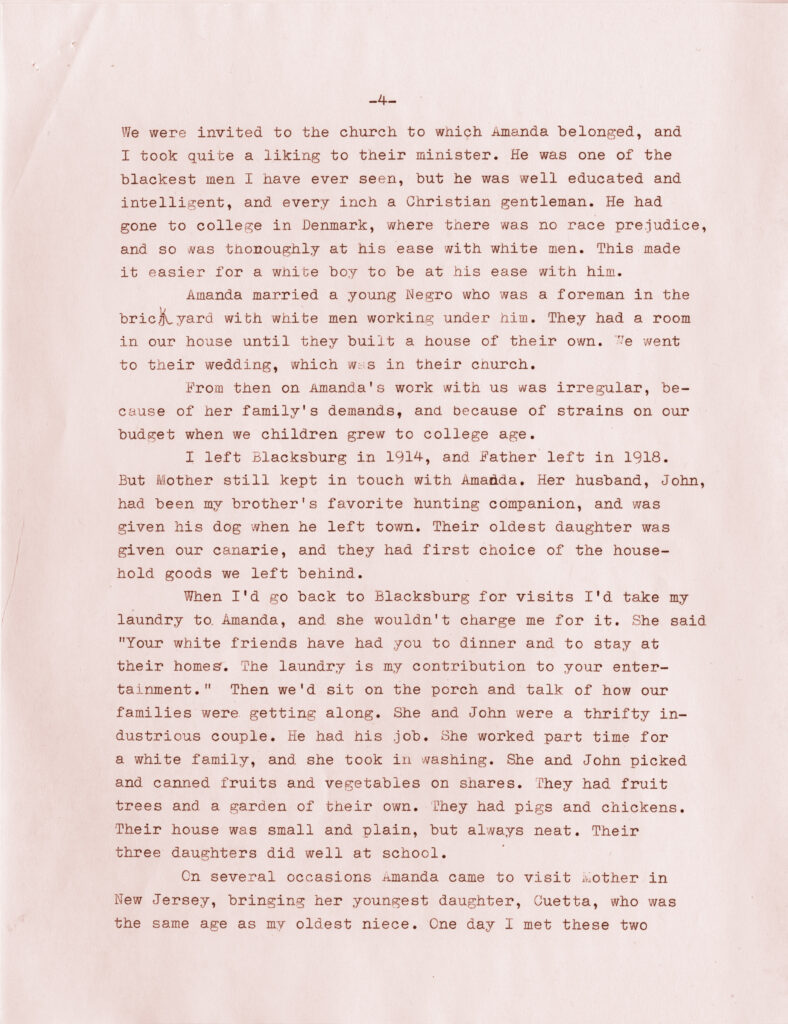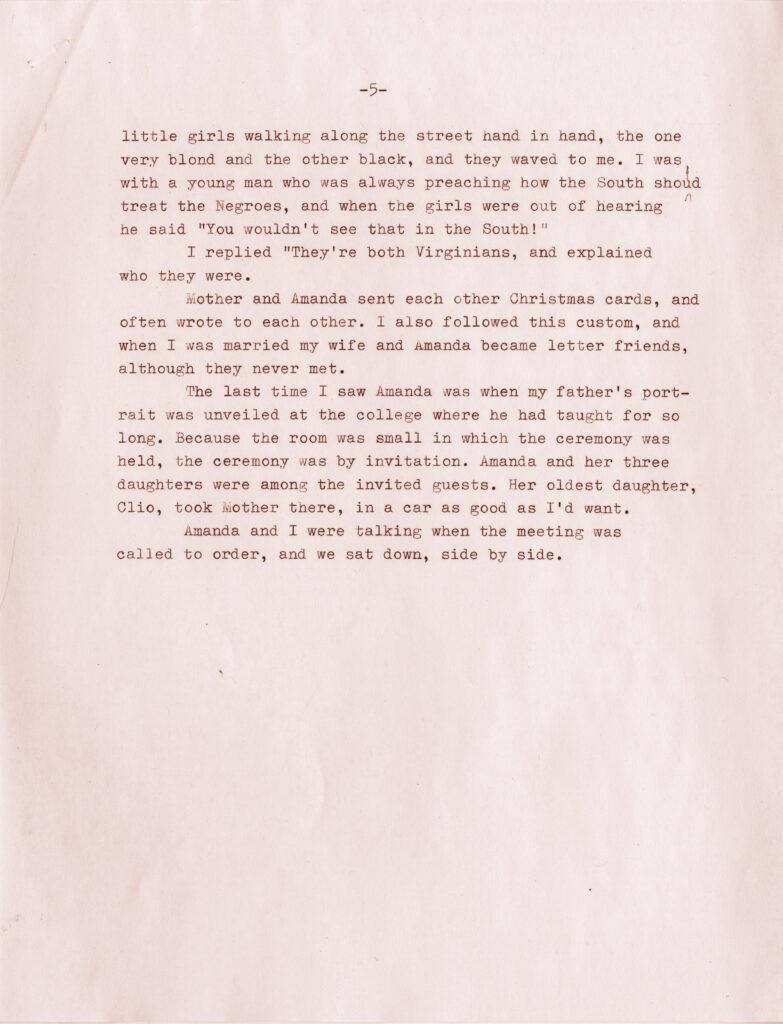Hidden History at Special Collections III
(In this on-again, off-again (mostly off-again) series, we look at interesting pieces found in unexpected placesnoteworthy items that, because they represent only a tiny part of a larger collection thats devoted to unrelated topicsremain concealed to all but the most thorough of researchers.)
Despite an increased interest in the past couple of decades, Blacksburgs early African-American experience remains an underrepresented piece of the towns history. Such projects as the restoration of St. Luke and Odd Fellows Hall as a museum of black history have done much to preserve a long-ignored history, but still African-American contributions to Blacksburgs early development remain greatly undocumented. With a dearth of primary sources, every scrap of information that comes to hand is a precious discovery. One such discovery is a brief, off-the-cuff essay found in the James Robbins Randolph Papers (Ms1971-001).
Born in 1891, James Randolph was the son of Lingan Randolph, a professor of mechanical engineering at Virginia Polytechnic Institute. The younger Randolph grew up in Blacksburg and obtained his own degree in mechanical engineering at VPI in 1912. After earning a masters degree at Harvard in 1921, Randolph taught physics and mechanical engineering at a succession of colleges and served in the U. S. Army Reserve Ordnance Department from 1931 to 1943.
Nearly all of Randolphs surviving papers consist of his notes and writings on various subjects. Not surprisingly, most of these writingsboth fiction and non-fictionfocus on science and technology, particularly rocketry. But within a collection of essays gathered under the title Maybe We Are Not Wanted on Mars is a brief, seemingly incongruous piece Randolph called Amanda: Colored Daughter of Virginia.
In his five-page essay, the professor offers his views of race relations in the South, focusing primarily on the Blacksburg of his youth. His viewpoints might today be considered at best nave, but they do offer some insights into race relations in Blacksburg a century ago. For example, Randolph attributes the necessity for the founding of New Town, a one-time historically black neighborhood near the present intersection of Main Street and Prices Fork Road, to an influx of new residents:
Before the Civil War in the South, Negroes and whites lived side by side because they belonged to each other, and seldom had occasion to move separately. After the war both found it expedient to stay where they were As the older people of both races died, or moved and were replaced by strangers, living side by side became less pleasant. So a group of Negroes bought a farm on the edge of town, divided it into lots, and called it Newtown.
Elsewhere in the essay, Randolph repeats his assertion that problems between the races resulted from disruptions by outsiders. Despite presenting a somewhat skewed look at the issue, Randolph recalls becoming aware at an early age that local relations between the races were not always easy, and that crises could erupt at any time:
Some of our students were from the mountains, where strange Negroes were apt to get shot, so we always feared a race riot, but it never came. As soon as we boys were big enough, Father told us how he planned to meet such an emergency. His plan was to round up as many as possible of our colored friends and get them into our house. Then he would take the front door, while we boys and the colored men took the back and sides. We were all good shots, and he explained that a man with peaceful intentions would come to the front door, whereas an enemy would try to sneak in somewhere else, so there was no harm in being trigger happy there.
It was around 1900, Randolph recalls, that two colored girls, Amanda and Ella began coming to us once a week to give the house a real cleaning. Thus began the familys lifelong friendship with Amanda, who eventually became the Randolphs cook. Later, when Amanda married, she and her husband John would live in the Randolph house while saving for a home of their own. Throughout the essay, Randolph writes of the couple with fondness and respect:
She and John were a thrifty industrious couple. He had his job. She worked part time for a white family, and she took in washing. She and John picked and canned fruits and vegetables on shares. They had fruit trees and a garden of their own. They had pigs and chickens. Their house was small and plain, but always neat. Their three daughters did well at school.
The Randolphs eventually left Blacksburg (James Randolph in 1914, his parents in 1918) but frequently corresponded with Amanda, and she visited the Randolphs in New Jersey on several occasions. James Randolph concludes his essay by remembering his last meeting with Amanda:
The last time I saw Amanda was when my fathers portrait was unveiled at the college where he had taught for so long Amanda and her three daughters were among the invited guests. Her oldest daughter, Clio [sic], took Mother there Amanda and I were talking when the meeting was called to order, and we sat down, side by side.
Randolph never provides Amandas last name, but a quick search of the census reveals the missing information. Among the inhabitants of the Randolph household in 1910, the census lists two servants named John B. and Amanda D. Rollins, aged 38 and 29, respectively. By 1920, John and Amanda owned a home of their own, which they shared with three daughters: Cleo, 10; Theriffee, 8; and Cuetta, 4. The census notes that the Rollins home was on a cross alley between Prices Fork Road and Main Street, placing it within the bounds of what was at that time New Town. The family continues to appear in Blacksburg through the 1940 census, which shows Amanda Rollins, a 61-year-old, widowed cook, living on New Town Alley with daughters Cleo Price, 30; and Quella Rollins, 23. Cemetery readings on findagrave.com reveal that Amanda Rollins died in 1950 and is buried in Blacksburg. John B. Rollins (1878-1931) is also buried there, as are the couples daughters, Cleo Rollins Price (1910-1974), Theriffa Rollins Christian (1911-1956), and Cuetta Virginia Rollins Webb (1916-1987).
For more on Blacksburg’s African-American history and Special Collections’ role in helping to preserve it, see Sam Winn’s post of October 19, 2015, “Uncovering Hidden Histories: African Americans in Appalachia.”
